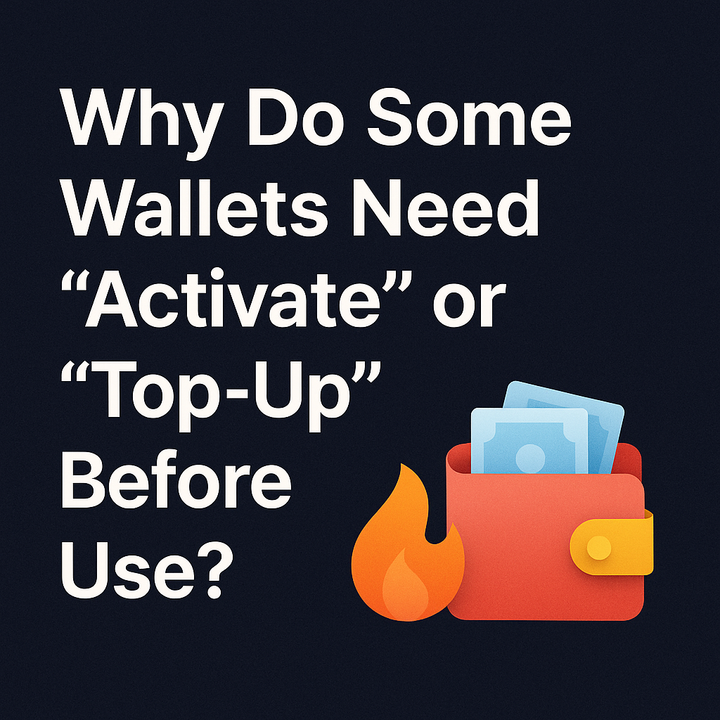From Silicon Valley to Wall Street: Why Institutional Appetite for Digital Dollar Infrastructure Is Growing

Once viewed as a fringe experiment by crypto idealists in Silicon Valley, digital dollar infrastructure is now catching the eye of the most conservative players on Wall Street.
We're talking asset managers, banks, payment giants, and even governments all warming up to the idea that stablecoins and tokenized dollars could reshape how money moves around the world.
So, what’s changed?
The short answer is:
trust --» transparency --» utility.
Stablecoins have gone from being risky internet tokens to becoming viable tools for fast, low-cost, and programmable payments.
And at the heart of this evolution are regulated stablecoin issuers like Circle (USDC) and Paxos (PYUSD) building bridges between crypto rails and traditional finance.
Let’s unpack what’s driving this shift and why it matters for the future of finance.
The Rise of Digital Dollar Infrastructure
“Digital dollar infrastructure”
might sound technical, but it’s really about rethinking how we send, settle, and store money.
Today’s financial system still relies on slow-moving wires, intermediaries, and limited hours of operation.
In contrast, stablecoins offer 24/7 global money movement, near-instant settlement, and programmable logic that can automate everything from payroll to international trade finance.
This isn’t theoretical anymore. USDC alone has processed trillions of dollars in on-chain volume. And with players like Visa, Mastercard, and PayPal now testing or integrating stablecoin technology, we’re watching a real shift unfold.
➠ Why Institutions Are Finally Paying Attention
Institutions were initially cautious about stablecoins, and rightly so early versions lacked transparency and proper backing. But that’s changed.
Today's leading issuers are taking a compliance-first approach, working directly with regulators, providing public attestations of reserves, and operating within licensed frameworks.
For example:
Circle’s USDC is backed by short-term U.S. Treasuries and cash, with monthly reports from top auditing firms.
Paxos, the issuer of PayPal USD, is regulated by the New York Department of Financial Services (NYDFS), one of the strictest financial watchdogs in the U.S. These structures give institutions the confidence to experiment with digital dollars especially as demand for faster, cheaper payment rails grows.
➠ Use Cases: Payments, Remittances, and Capital Markets
Stablecoins are more than just “crypto cash.” They’re increasingly being used as infrastructure for real-world finance.
✅ Cross-border Payments & Remittances:
Traditional remittances are slow and expensive. Stablecoins let users send money globally in seconds with near-zero fees unlocking a better solution for families, freelancers, and small businesses worldwide.
Major fintechs and even central banks in developing economies are now exploring stablecoin rails for precisely this reason.
✅ Institutional Settlements
Imagine settling trades, loans, or treasury operations in real time, without needing to wait two business days. That’s what stablecoins enable. Wall Street firms are now exploring how tokenized dollars can replace outdated plumbing in capital markets reducing counterparty risk and boosting efficiency.
✅ On-chain Finance (Real-World Assets)
As tokenization gains ground, everything from U.S. Treasuries to real estate is being issued on-chain. These assets need a stable, programmable unit of account to function and stablecoins fill that gap perfectly.
⭐The Role of Regulation
One of the biggest accelerators (and hurdles) in this space is regulation.
Governments globally are starting to recognize the strategic value of digital dollar infrastructure, especially as they consider competition from foreign stablecoins or CBDCs (central bank digital currencies).
The EU and U.S. are developing stablecoin rules. Some regulators are even proposing federal charters for stablecoin issuerseffectively allowing banks and fintech to issue digital dollars under strict oversight.
This kind of clarity is crucial. The more regulated the environment, the more comfortable big institutions become and the more capital flows into this new form of financial infrastructure.
➠ Final Thoughts: Not Just Crypto, but Infrastructure
What we’re seeing isn’t just the growth of a new asset class,it’s the reinvention of how money works.
From payroll to settlements, from remittances to asset trading, stablecoins are quietly laying the groundwork for a faster, more open financial system.
And institutions once skeptical are now positioning themselves to lead, invest, or plug in.
Circle’s upcoming IPO, PayPal’s PYUSD, Visa’s USDC integrations… these aren’t isolated events. They’re signals that digital dollars are going mainstream not as a hype cycle, but as a permanent part of financial infrastructure.
The future of finance might still be built on Wall Street ,but the rails?
They’re being laid in code.
📚 References
1. Visa's Stablecoin Settlement on Solana – Visa Newsroom, Sept 2023
Visa expands its USDC settlement capabilities to Solana, showing how stablecoins are being used in traditional finance.
🔗 https://usa.visa.com/about-visa/newsroom/press-releases.releaseId.19762.html
2. Circle’s USDC Transparency Reports – Circle Blog, Ongoing Monthly attestations of USDC reserves, illustrating Circle’s commitment to regulatory-grade transparency.
https://www.circle.com/en/transparency
3. PayPal Launches PYUSD Stablecoin – CNBC, August 2023 PayPal becomes the first major financial tech company to launch a fully regulated USD-backed stablecoin.
https://www.cnbc.com/2023/08/07/paypal-launches-us-dollar-backed-stablecoin-called-pyusd.html
4. IMF: The Rise of Stablecoins and the Need for Regulation International Monetary Fund (IMF), April 2024 https://www.imf.org/en/Blogs/Articles/2024/04/18/why-we-need-to-regulate-stablecoins-now
5. Tokenization of Real-World Assets & Institutional Involvement
https://www.bcg.com/publications/2023/future-of-tokenized-assets



Comments ()